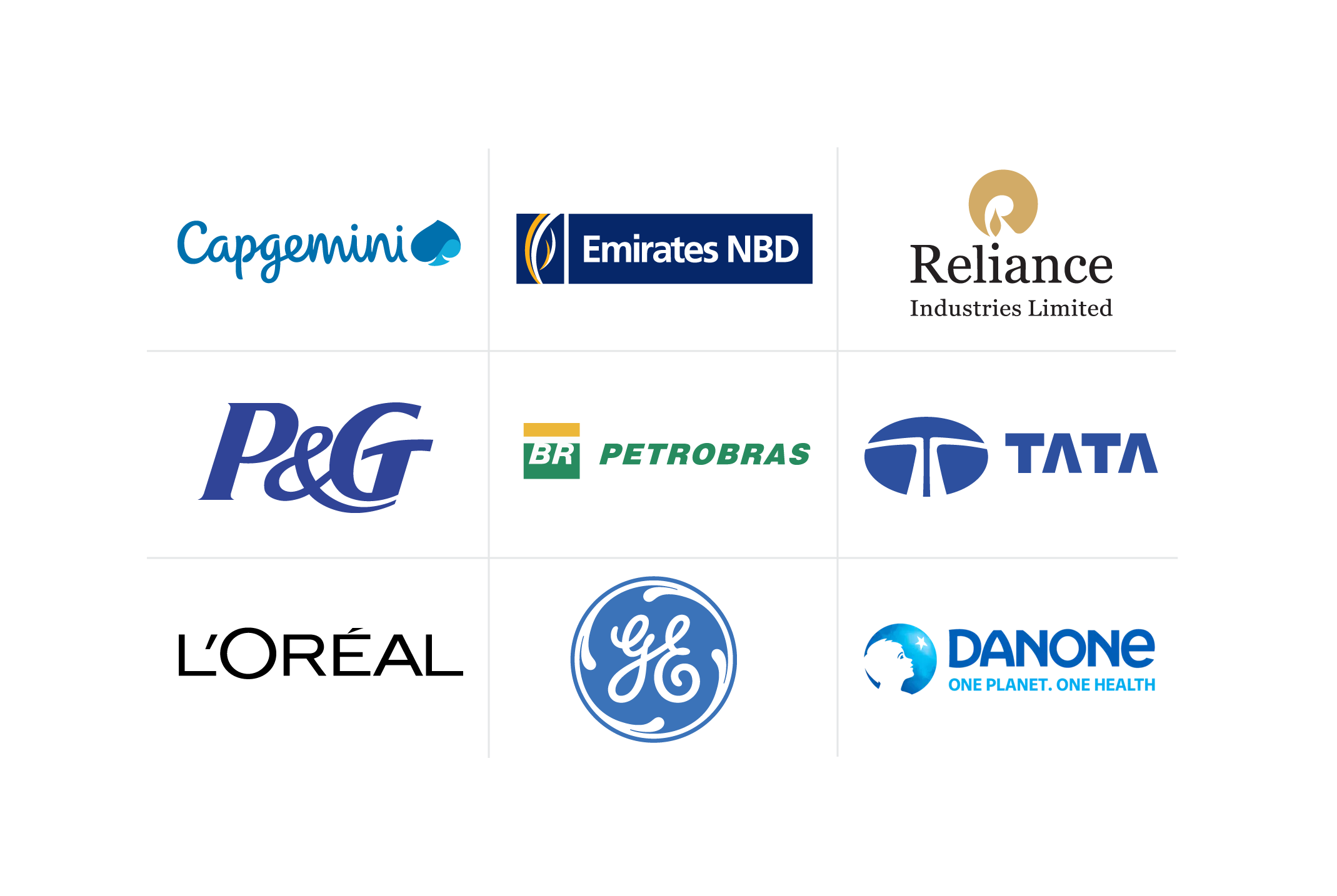Bridging the Curriculum Gap: Strategies for Successful Learning Programs
Explore how to bridge a curriculum gap at your company for a better employee learning and development program.
![[Featured Image] Three employees participate in corporate learning designed to bridge the curriculum gap.](https://d3njjcbhbojbot.cloudfront.net/api/utilities/v1/imageproxy/https://images.ctfassets.net/2pudprfttvy6/70alnHP3hjdnB97n4RQXQY/49c7e207963f7b2918c9db6152135fbd/GettyImages-1460217722.jpg?w=1500&h=680&q=60&fit=fill&f=faces&fm=jpg&fl=progressive&auto=format%2Ccompress&dpr=1&w=1000)
A curriculum gap refers to the difference between the expectations you attach to your learning program and how much learners actually gain from the content. Understanding curriculum gaps can help you improve your program for a more skilled and successful workforce.
Discover what a curriculum gap is and how it affects your business. Then, explore how to identify curriculum gaps and how to correct them to optimize your learning efforts.
How do gaps in curriculum affect learners?
If employee qualifications don't match company expectations, your learning and development (L&D) program might have a curriculum gap. If this is the case, a business might consider working with the HR department to enhance the organization's learning culture. This could be based on individual interests that encourage employees to learn new skills while expanding their skill set. According to a survey by PwC, 74 percent of surveyed employees stated that they wanted to develop additional skills to retain their employability in the future [1].
Ineffective employee training can create various adverse effects for employees and your brand. Some of these include:
Lower employee morale: Lack of skills to perform a job can cause frustration, stress, and reduced confidence.
Less productivity: When employees lack the skills and knowledge they need, their job performance suffers.
Damaged brand image and reputation: Unhappy employees might spread the word about inadequate training or inadvertently allow their dissatisfaction to affect customer service and client interaction, potentially damaging your company's reputation.
How to identify a curriculum gap in your corporate training program
Identifying a curriculum gap can help improve your training program, boosting employee morale and company success. Consider these strategies for identifying gaps in your training curriculum.
Assess your training needs
Before you examine your training curriculum, assess your training needs to make sure you're providing your employees with the right knowledge and skills. You can conduct interviews with employees, provide them with surveys, or conduct performance reviews to determine the areas of training that need to improve. Use the following steps to determine your training needs:
Define your training goals and objectives (what you need your employees to know)
Assess the skills and knowledge your employees currently have
Identify employee skills and knowledge gaps
Conduct a gap analysis of your current training curriculum
Once you've assessed your training needs, you can look at your training curriculum and find out where it's lacking. To analyze your current curriculum, consider the training goals and objectives you defined when assessing your training needs. Then, examine your training content, training methods, instructors providing your training, and other available training resources. Finally, compare your training goals and objectives to your current training curriculum. Locate any curriculum gaps and develop strategies to fill them. Examples of strategies might include:
Updating your instructional strategies
Hiring different training instructors
Changing training methods
Revising current training programs
Creating learning communities
Providing fieldwork, on-the-job coaching, and short workshops
Tips for planning and developing curriculum
Knowing how to plan and develop your curriculum ensures your employees receive the most effective training. Consider these curriculum planning and development tips:
Set clear goals for learning
Setting clear goals for learning helps training participants know what to expect from your training curriculum. This practice also helps instructors plan and present the training material and helps you evaluate training success.
Decide what type or types of training to offer
Becoming familiar with the different types of training can help you decide what to offer your employees. Training types you can offer include:
Classroom training: An instructor provides information to a group through lectures or presentations; this format also works well for teaching through storytelling.
Workshop training: An instructor works with a small group or groups of participants, which allows for more personalized instruction if necessary.
Coaching or mentorship: Participants learn one-on-one from a coach or mentor.
Industry conferences: Individuals or groups of employees learn at off-site conferences through networking and guest speaker presentations.
Technical skills training: Participants learn skills that help them perform their specific jobs through on-the-job training or simulations.
Workplace skills training: Participants learn skills that help them interact with others at work.

Utilize different learning modes
Since people learn best in various ways, utilizing different learning modes in training helps address the learning styles of all training participants. Types of learning modes include:
Auditory (processing information through listening)
Visual (processing information through visual images)
Kinesthetic (processing information through physical movement)
To include all these learning modes in training, consider incorporating a blend of:
Lectures and videos
Graphs, diagrams, and charts
Books and handouts
Role-playing and props
Podcasts about the subject matter
Physical demonstrations
Small group activities
Create personalized learning paths for employees
In addition to focusing on the different ways that employees learn, remember that your employees have varying backgrounds and work experience, which means you need to consider formulating personalized learning paths. Incorporating personalized learning paths into your L&D program can help ensure adequate training for all. Personalized training offers the added benefit of higher employee engagement.
Incorporate emerging trends and technology
Emerging trends and technology can help make training easier and more convenient for you and your employees. Some examples might include:
E-learning platforms for remote upskilling
Virtual reality simulations for on-the-job training from home
Digital adoption platforms (DAPS) that help personalize training for your employees and track their progress
AI-enhanced learning management systems (LMSs) that can recommend training topics, articles, books, videos, courses, and pathways
Potential challenges of improving and implementing training curriculum
Making positive changes in business usually involves dealing with a few challenges, such as setting rules for training sessions and overcoming employee resistance to change. As you improve and implement your training curriculum, be aware of overcoming the following potential obstacles:
Alignment of curriculum with company culture, mission, and values
When creating a training curriculum, make sure it lines up with your company culture, mission, and values. Try these tips for successful alignment:
Establish house rules for training sessions. Be on time, come prepared, turn off your phone, have respect for others, listen, give honest but constructive feedback, stay on topic, and have fun.
Make your company's mission part of every training session by assigning a team member to report an example of your company's values at work.
Incorporate team-building activities into training sessions to encourage communication, build trust, and boost confidence.
Your next steps on Coursera
The benefits of developing a new training curriculum for your employees can lead to greater success in the future for both your company and your employees. Now that you have a better understanding of training curriculum gaps and the importance of curriculum development, you can start putting what you've learned into practice.
With Coursera for Business, you can train teams across your organization in the skills that matter most in today’s digital economy. Your employees will gain access to content from 350+ leading universities and industry partners, where they can build real-world experience with innovative skills, tools, and technologies while earning globally recognized credentials. Our customizable, scalable learning solutions balance workplace and technical skills training in diverse formats, from video clips to guided projects and Professional Certificates. Accelerate your digital transformation and equip employees to drive growth with Coursera.
Article sources
PwC. “Workforce of the future: The competing forces shaping 2030, https://www.pwc.com/gx/en/services/workforce/publications/workforce-of-the-future.htm.” Accessed June 26, 2025.
This content has been made available for informational purposes only. Learners are advised to conduct additional research to ensure that courses and other credentials pursued meet their personal, professional, and financial goals.

